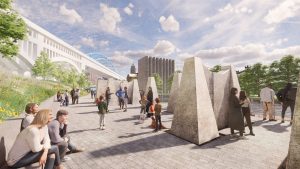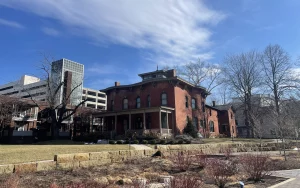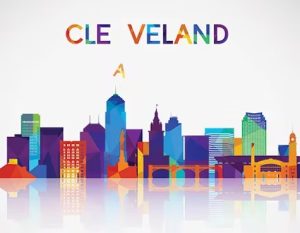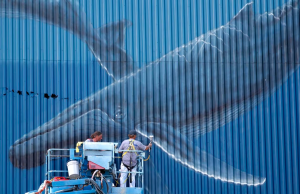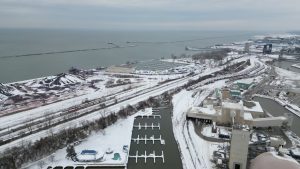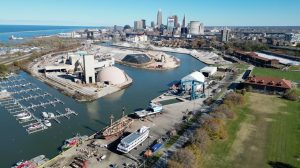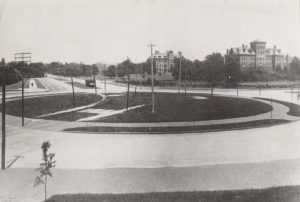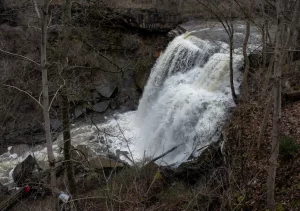
The inside story of how the Cuyahoga Valley became a national park
by Bob Downing, Special to The Akron Beacon Journal
U.S. Rep. Ralph Regula, R-Navarre, often said Americans know what they will find at national parks but national recreation areas are more murky, more mysterious, more unknown. His pet peeve was that the Cuyahoga Valley National Recreation Area was not a national park.
That’s why he singlehandedly changed the name of the Cuyahoga Valley park in 2000. It quietly went from Cuyahoga Valley National Recreation Area to Cuyahoga Valley National Park.
He simply added one sentence to a House appropriations bill. It said: “The Cuyahoga Valley National Recreation Area is redesignated as Cuyahoga Valley National Park.”
That bill with Regula’s sentence was approved by Congress, signed by President Bill Clinton and became law on Oct. 11, 2000.
It is a method that has been used by other federal parks in recent years to become more-attractive national parks.
Regula, who died in 2017, has been widely hailed as a founding hero of Cuyahoga Valley with its popular Ohio & Erie Canal Towpath Trail. He worked with U.S. Rep. John Seiberling, D-Akron, to establish the 33,000-acre park between Akron and Cleveland in 1974. Regula served on a House appropriations committee and funneled $200 million in federal funds to Cuyahoga Valley during his 36 years in Congress.

He also worked in 1996 to establish the Ohio & Erie Canalway. That federal corridor stretches from Cleveland through Akron and Canton to New Philadelphia and links Cuyahoga Valley to communities outside the park boundaries.
But Regula’s role in the park’s name change was not widely known. Regula made no announcement at the time and neither did Cuyahoga Valley. There was no media coverage. Word of the name change trickled out. Regula’s role in changing the name was not fully explained, although park officials were fully aware of what he had done.
Regula’s son, Richard, a Stark County commissioner, said he had no knowledge of his father’s role in changing Cuyahoga Valley to a national park in 2000.
“But that sounds like Dad,” he said. “He loved the (Towpath) Trail and he loved the park.”

‘You’ve got a new national park’
The name change provided Cuyahoga Valley National Park with more prestige and more visitors. Very little else changed. It’s no secret that national parks are the stars of the federal park system and are the most popular and the biggest attractions. The change required new signage and updated maps and brochures with the new name in the Cuyahoga Valley park.

Regula’s role becomes clearer in a National Park Service oral history recorded in 2006 by former National Park Service Director Robert G. Stanton.
He recalled that Regula had called him in 2000 to say, “Bob, you’ve got a new national park.”
That surprise announcement from Regula is part of a Stanton oral history conducted by NPS staffer Janet McDonnell.
Stanton called Regula’s actions “interesting” and praised Regula’s chutzpah in making the change.
“I love that,” Stanton said.
The change also happened immediately, thanks to Regula, he added.
Stanton said he had worked closely with Regula, a friend, and they had a productive relationship funding federal parks at that time.
Regula’s action also changed Cuyahoga Valley to a national park with no input from the National Park Service itself. The park service opposed the move when it learned of the change, but it was then too late.
CVNP now ranks 12th for visitors among national parks

Regula first told John Debo of his plan to change the park’s name at a celebratory dinner for the park’s 25th anniversary in July 2000 at Blossom Music Center, recalled Debo, the park’s superintendent from 1988 to 2009.
Three weeks later, Regula introduced the change.
“It was his achievement, his achievement alone,” Debo said in an interview. “It was a wonderful thing….It was one sentence, but that is all you needed.”
Under strict federal rules, park superintendents can have discussions and answer questions from members of Congress but they are barred from lobbying Congress members, Debo noted.
There had been no serious discussions in Cuyahoga Valley about seeking a change to become a national park prior to Regula’s move, he said.

Dan Rice, president and chief executive officer of the Akron-based Ohio & Erie Canal Coalition, praised Regula for being smart, clever and masterful in getting the name changed.
“As an incredible advocate for Northeast Ohio and the region, Congressman Ralph Regula recognized the importance of the name change from a national recreation area to a national park for Cuyahoga Valley,” Rice said. “Through his visionary leadership and masterful legislative skills, Congressman Ralph Regula elevated Cuyahoga Valley National Park alongside Yellowstone, Grand Canyon and Yosemite national parks. With a stroke of the pen, Cuyahoga Valley became Ohio’s only national park, ensuring a legacy for future generations.”
Last year, Cuyahoga Valley ranked 12th for total visitors among the 63 national parks, with 2.8 million visitors. Great Smoky Mountains National Park was No. 1 with 13 million visitors. Cuyahoga Valley ranked ninth the previous year.
The full national park system consists of 429 units including battlefields, national monuments, seashores and lakeshores, rivers and scenic and historic trails. There are dozens of different types of federal properties within the overall system that covers 85 million acres and attracts 325.5 million visitors per year. That total is up 13 million or 4% from 2022.

The politics of national parks
Interestingly, Indiana Dunes National Park used Regula’s tactics in 2019 when it became a national park, and its now-retired superintendent had close ties to Regula and Cuyahoga Valley
Paul Labovitz retired in July 2023 as Indiana Dunes superintendent after nine years. He was previously a NPS trail planner in the Midwest and was stationed in Cuyahoga Valley. He played a key role in establishing the Regula-supported Ohio & Erie Canalway.
Asked if he was familiar with Regula’s name-change action, Labovitz said, “Of course. I was there….He knew how to get things done.”

His park on Lake Michigan near Michigan City, Indiana, was created in 1966 as Indiana Dunes National Lakeshore. The push to change the name was led by U.S. Rep. Pete Visclosky, D-Indiana. He had introduced legislation in 2017. That effort failed. The name change had been opposed by the park service.
He knew Visclosky had alternate plans, but wasn’t sure what would happen next.
The name change was quietly slipped into the omnibus spending bill by Visclosky in 2019. It passed Congress and was signed by President Donald Trump. Visclosky left Congress in 2021.
The park covers 15,000 acres and is the first national park in Indiana. Stephen Mather, the first NPS director, had proposed making the dunes a national park in 1916 — but it didn’t happen.
Labovitz said other federal parks have used the Regula method in recent years to get parks redesignated as national parks: Gateway Arch in Missouri, White Sands in New Mexico and Pinnacles in California.
“Getting a park designated a national park is 20% dependent on resources and 80% dependent on politics,” he said. “It takes political muscle to get things done with the National Park Service.” The best solution would be to turn all federal parks into national parks, he said.
Bob Downing is a retired environmental writer for the Akron Beacon Journal.

